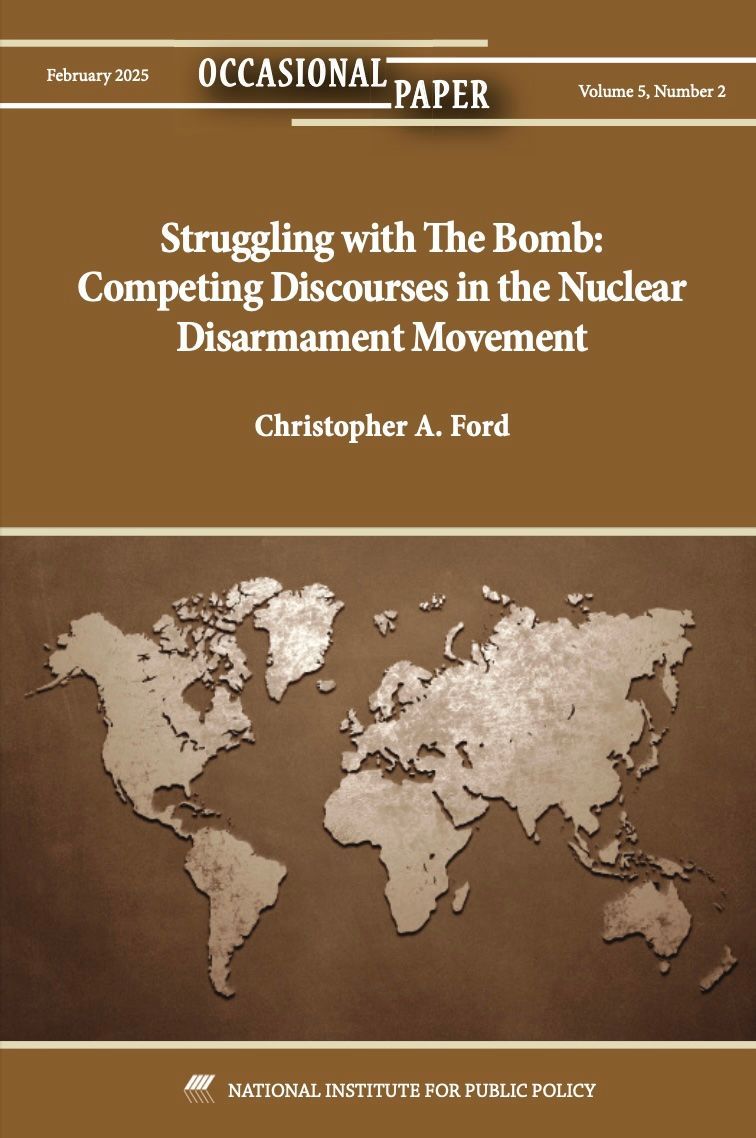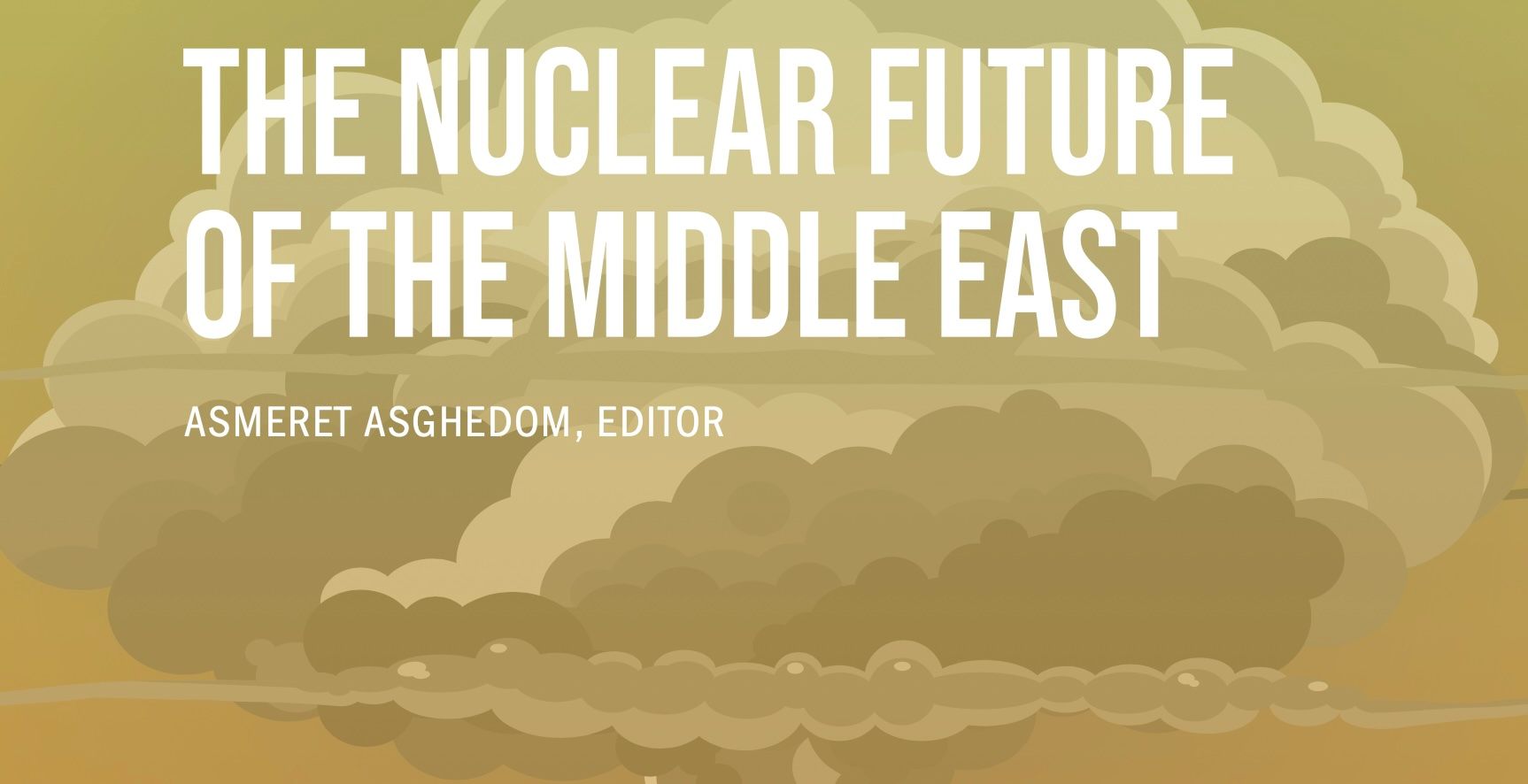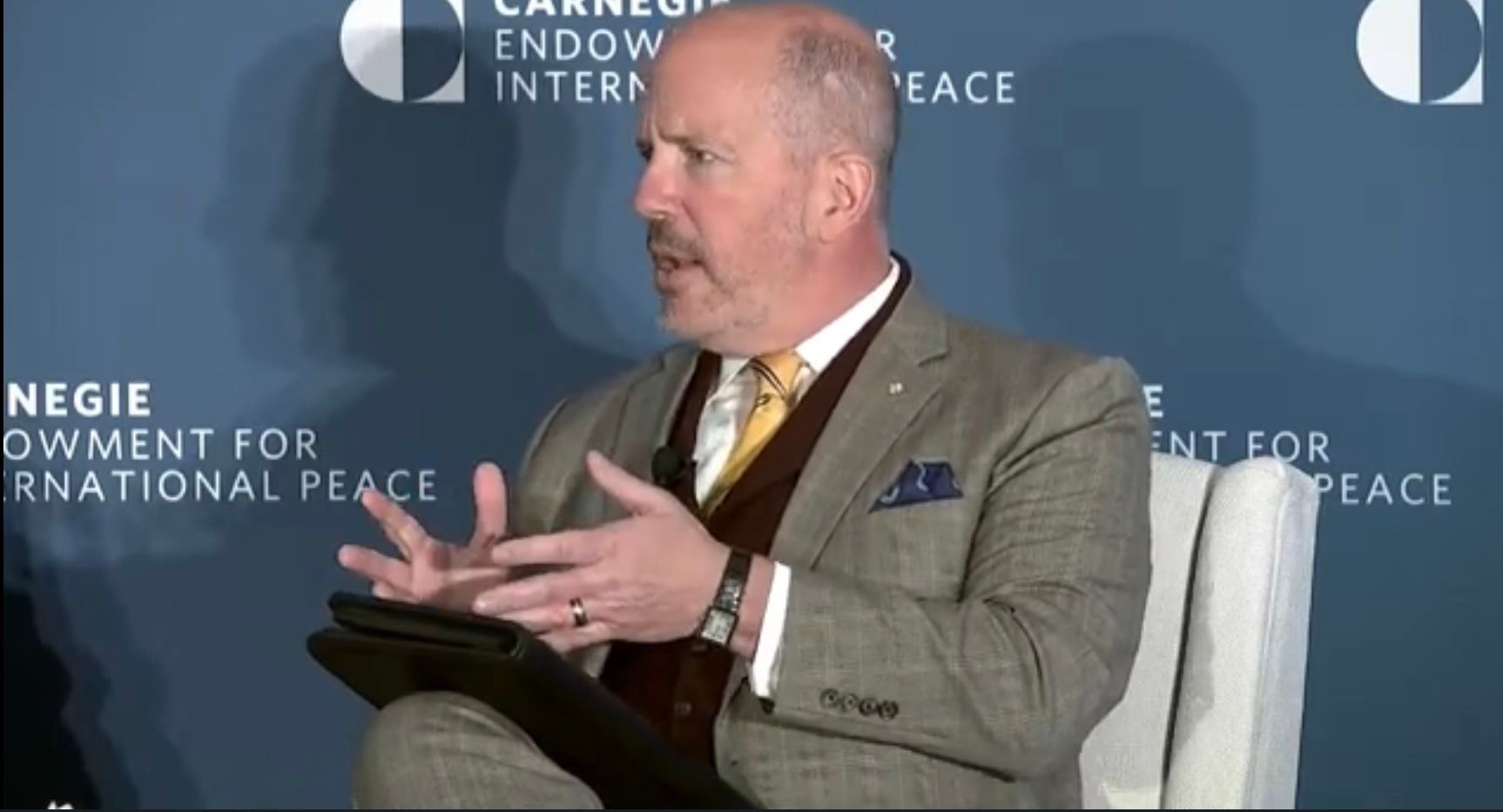Four Warnings About the “Dark Quad”
Below appears the text on which Dr. Ford based his comments at a symposium organized on July 23, 2024, on “Emergence of A New ‘Quad’: The Growing Entente Between China, Russia, North Korea, and Iran,” hosted by the National Institute for Public Policy.
Thanks for inviting me to participate in this webinar on the “New Quad” of the brutal dictatorships of China, Russia, North Korea, and Iran. I myself prefer to think of these four as the “Dark Quad,” for in a sense they do form the perfect malevolently antithetical counterpoint to the valuable work of the real Quad – that is, the important quadrilateral dialogue between the developed democracies of the United States, Japan, Australia, and India.
It would probably be difficult to overstate the potential challenges that the “Dark Quad” presents to international peace and security – not to mention to our own country’s national security interests and those of our allies and partners, and indeed all who prize peace and wish to preserve their political autonomy as sovereign peoples. Time being short, I’ll mention just four big ones.
These remarks offer only my personal opinions, of course, and don’t necessarily represent the views of anyone else. They’re also pretty depressing, I suppose. But let me offer what insights I can.
My four warnings are all related to the fact that the military quasi-alliance of the Dark Quad includes both the world’s only two nuclear-armed revisionist great powers and the world’s two most prominent nuclear proliferators.
- Of the two proliferators, North Korea, of course, pursued nuclear weapons for years, signed the Nuclear Nonproliferation Treaty (NPT) in bad faith, immediately violated it, got caught, obtained a concessionary deal with the West in return for supposedly freezing its nuclear weapons work, violated that promise too, then pulled out of the NPT, and has since built itself a rapidly-growing and ever more sophisticated nuclear arsenal.
- For its part, Iran pursued nuclear weapons for years, got caught, faced international sanctions, obtained a concessionary deal with the West in return for temporarily delaying its nuclear progress, but is today busily at work enriching uranium and cementing its status as a so-called “latent” or “virtual” nuclear weapons possessor able to sprint toward weaponization at the drop of a hat.
- And the great power members of the Dark Quad are currently involved in their own nuclear build-ups. This means not just modernizing legacy systems, but more importantly also building entire new categories of delivery system, and apparently conducting secret low-yield nuclear testing. In Beijing’s case, it also means expanding the size and scope of the Chinese Communist Party’s nuclear arsenal at a truly shocking pace despite China already being, in relative terms, the most powerful it has ever vis-à-vis any potential adversary power since at least the 18th Century.
- But the problem doesn’t lie just in the capabilities of these four Dark Quad authoritarian dictatorships. They also exhibit grave behavioral pathologies far beyond just the internal brutalities of their ruling regime’s domestic repression.
- One of them, (Russia) is actively involved in a vicious war of aggression to capture and annex a neighboring democracy.
- Another (China) has been preparing itself for years to invade and destroy one of East Asia’s most vibrant democracies in Taiwan, even while also grabbing at bits and pieces of territory from other neighbors to the south.
- A third (Iran) continues to nurse destabilizing dreams of theocratic hegemony in the Middle East, and expresses this by actively subverting and attacking other countries in its region.
- And the fourth (North Korea) is ruled by a dynasty of reclusive dictatorial sociopaths who periodically lash out in violent affronts to the sovereignty and security of another vibrant East Asian democracy to their south.
So what, as the saying goes, could possibly go wrong? (A lot, obviously!) So, as a starting point, let me offer four warnings.
The Death Knell for Nonproliferation?
First, as a longtime nonproliferation diplomat, I should point out that the advent of the Dark Quad may sound a death knell for the nuclear nonproliferation regime. By that I don’t mean that it’s impossible for some rump, denuded shell of that regime to stumble along for a while. I hope it does, and there’s certainly still lots of important nonproliferation work that can still be done.
But with two veto-wielding Permanent Members of the U.N. Security Council and regional aggressors now in a de facto military alliance with the world’s two worst nuclear proliferators, it’s hard to see much real hope for the global nonproliferation regime being effective going forward. After all, the international community did a notably bad job of handling the challenges presented by the two proliferators of North Korea and Iran even back when there appeared to be a consensus among the great powers on the importance of nonproliferation. And now, now that Russia and China are putting the “pro” back into “proliferation”? You can probably forget it.
Pooled Adversary Capabilities
My second warning has to do with the implications of the fact that the four members of the Dark Quad now increasingly have the opportunity to pool their capabilities in various ways against the three things they hate most: the United States, the other countries of the West, and the current rules-based international order.
Part of the Dark Quad threat comes from the possibility of what might in some respects turn into a “pooled” adversary defense industrial base. We have seen from the Ukraine conflict that the requirements of modern, high-intensity conventional war in terms of equipment, materiel, and manpower are simply enormous. After decades of post-Cold War complacency and strategic myopia, however – years in which we assumed that our former strategic adversaries would “cooperate with us in diplomacy and global problem solving” and in which we built our national security strategy around the assumption that those powers were indeed “no longer strategic adversaries” at all – such productive capabilities are far beyond our current capacity to supply them.
Yet already China is helping equip and bankroll Russia’s war in Ukraine with financial support, technology, and other aid – thus recently eliciting a rare NATO rebuke of Beijing as a “decisive enabler” of Putin’s war of aggression – while North Korea supplies Russia with munitions with which to kill Ukrainians, and Iran likewise supplies drones. Russia, meanwhile, has promised to help North Korea with unspecified assistance, China and Russia have both helped Pyongyang evade U.N. sanctions for years, and China also funding Iran’s regional destabilization and aggressive missile program by buying Iranian oil.
We need, therefore, to be keenly aware of – and, if we can, move to counter – the threat that the Dark Quad will increasingly “pool” industrial and military capabilities in ways profoundly dangerous to the United States, our allies and partners, and indeed to any country with the bad fortune to have one or more of these predatory powers as a neighbor. This certainly doesn’t necessarily mean that I foresee some kind of quadripartite analogue to China’s own domestic “Military Civil Fusion” (MCF) strategy of trying in effect to erase all distinctions between the military and civilian sectors, for I can’t see anything that elaborate or ambitious being possible among the Dark Quad powers.
At the very least, however, the Dark Quad will likely do more in these regards than it ever has before – and potentially a great deal more. We in the United States are no strangers to seeing each of the Dark Quad powers as a threatening problem state in its own right, of course. Nevertheless, we haven’t yet gotten our minds around the possibility that their various different strengths as international malefactors could complement each other and become mutually reinforcing in a deliberately coordinated way.
From a deterrence and nuclear force posture planning perspective, U.S. planners are already struggling with the implications of the unprecedented challenge of facing two nuclear-armed near-peer adversaries at the same time. But the problem is bigger than that, also encompassing broader issues of Defense Industrial Base (DIB) capacity, critical supply chains, military-technological development, and even mobilizable manpower. (Already, for instance, Russian media have claimed that North Korean “volunteers” are being readied to be sent to Ukraine. How close might Dark Quad cooperation become in the future?)
It is not for nothing, after all, that the great 19th Century Prussian and then German statesman Otto von Bismarck referred in his memoirs to the “nightmare of coalitions” (“le cauchemar des coalitions”) when contemplating the possibility that his country’s potential enemies – and at that point he had Russia and Austria particularly in mind – might coordinate against it. As American strategists contemplate a Dark Quad world, we need to keep an analogous cauchemar always in mind.
The Challenge of Coordinated Aggression
But this modern “nightmare of coalitions” goes well beyond simply the problem of aggregate – and potentially “pooled” – capability. Growing Dark Quad cooperation also raises the potential problem of coordinated activity.
U.S. officials have long been worried about the possibility of opportunistic aggression by one or more problem powers if the United States were to end up in hostilities with another of them. (China, for instance, might move against Taiwan in an attempt to take advantage of the Americans being distracted by a campaign against Iran.) Needless to say, from a force posture, asset-allocation, and logistics perspective, this is already a formidable problem for defense planners. There are certainly sound reasons for concern, as my Missouri State University colleague Dave Trachtenberg has pointed out, that the U.S. Defense Department’s traditional “two-war” policy – namely, of being prepared for handle two simultaneous conflicts in different parts of the world – has been allowed to atrophy.
But the “nightmare of coalitions” raised by the Dark Quad goes beyond merely opportunistic aggression. What if there were active coordination? In a merely opportunistic aggression scenario, our various adversaries would implement military plans that had presumably been prepared independently, each according to its own logics. Even worse than that, however, would be a scenario in which our adversaries implement military plans that have been deliberately coordinated, and in which they do this in a synchronized way and with capabilities deliberately chosen in order to present us with the most horrendous challenge possible. That, needless to say, would be a very great threat indeed, and Trachtenberg is clearly right that we are today “ill-prepared to prosecute a two-war scenario, especially one involving Sino-Russian collaboration,” and things would be even worse with “three-bad guy” or “four-bad guy” scenarios. We’ve got a lot of work to do.
The Challenge to American Nuclear Weapons Posture
Not incidentally, I’ll also add – and this is my fourth warning – this cauchemar des coalitions also puts paid to some the more persistent shibboleths of post-Cold War U.S. nuclear weapons policy. For decades, since the beginning of the post-Cold War era, U.S. defense planners have relied upon our country’s unparalleled conventional military prowess as our first and best answer to adversary aggression, and president after president has promised to “reduce reliance upon nuclear weapons.”
The possibility of opportunistic aggression by members of the Dark Quad, however – let alone that of coordinated aggression – suggests the conceptual bankruptcy of this longstanding ambition by signaling the possibility that even our vaunted conventional might be unequal to the operational demands of multi-theater conflict against the Dark Quad.
Already, the coercive nuclear threats Russia has been making over Ukraine, grounded in the Kremlin’s huge superiority over NATO in lower-yield, theater-range nuclear delivery systems, have made clear our need to restore some loosely analogous capability of our own. This is why we in the Trump Administration developed the lower-yield W76-2 nuclear warhead and began to build the Submarine Launched Cruise Missile-Nuclear (SLCM-N), and it’s why Congress has very sensibly prevented the Biden-Harris Administration from foolishly canceling the latter program. And it may well be – especially as China follows Putin’s footsteps in developing ways to use its rapidly-expanding arsenal as an “offensive nuclear umbrella” under which to conduct regional aggression – that even these U.S. plans are not enough to restore deterrent stability.
But that’s a nuclear-centric threat. The Dark Quad “nightmare of coalitions” also raises the threat that – for the first time in a long while – the United States may be unable to rely purely upon its conventional military power even vis-à-vis conventional threats. We may not necessarily be there quite yet, but the day may be coming in which we might need theater nuclear weaponry to make up for potential conventional overmatch by a Dark Quad coalition.
Despite this, Biden-Harris Administration officials continue to mouth shopworn platitudes about our aim of “reducing reliance upon nuclear weapons.” Not to put too fine a point on it, but such statements are at this point, tragically, dangerous nonsense.
We some of this as recently as last month [June 2024], when National Security Council (NSC) Senior Director Pranay Vaddi told the Arms Control Association that the Biden Administration remains “committed to seeking … a world without nuclear weapons” and to “reducing the global salience of nuclear weapons.” His speech made headlines for his comment that if other powers are “unwilling to follow” our lead in reducing reliance upon nuclear weapons — and they “instead take steps to increase the salience of nuclear weapons – we will have no choice but to adjust our posture and capabilities to preserve deterrence and stability.” We “may reach a point in the coming years,” he said, “where an increase from current deployed numbers is required.”
Now, Pranay is a friend whom I’ve known for years from his previous service working on arms control issues as a career official at the State Department, and I like him personally. I also appreciate the importance of him giving notice to the Arms Control Association that the disarmament-focused framework around which they have constructed their conceptual universe is falling down around their collective ears.
Yet you may have noted Pranay’s careful conditionalities and his effort still to distance the Biden Administration from the real point. He said that “if” our adversaries don’t follow our lead, we “may” at some point need more nuclear weapons. But what he’s carefully not saying is what is, in fact, unfortunately all too true. Namely: (a) we’ve been trying that for many years, and our adversaries have not followed our lead in reducing reliance upon nuclear weapons; (b) our effort to “lead” a path toward disarmament has been at best wildly unsuccessful and perhaps even counterproductive; and (c) if we are to restore deterrent stability, we need – not “in the coming years,” but in fact now – more nuclear capabilities than we presently have.
These truths have, alas, been apparent for some while. Indeed, when I myself had Pranay’s current role in the Trump Administration NSC in 2017, I spoke to a nuclear disarmament group called the Ploughshares Foundation to roll out the findings of an internal NSC review of U.S. disarmament policy I had led, which concluded that the United States’ post-Cold War approach to disarmament had not produced the results it intended, that it had “run out of steam,” and that new thinking was therefore necessary. All that is even more true today, and the advent of the Dark Quad is simply driving this point home with painful acuteness.
I desperately wish this weren’t the case, but putting our heads in the sand about this during an election year is no way to meet the challenges with which our adversaries confront us.
-- Christopher Ford








